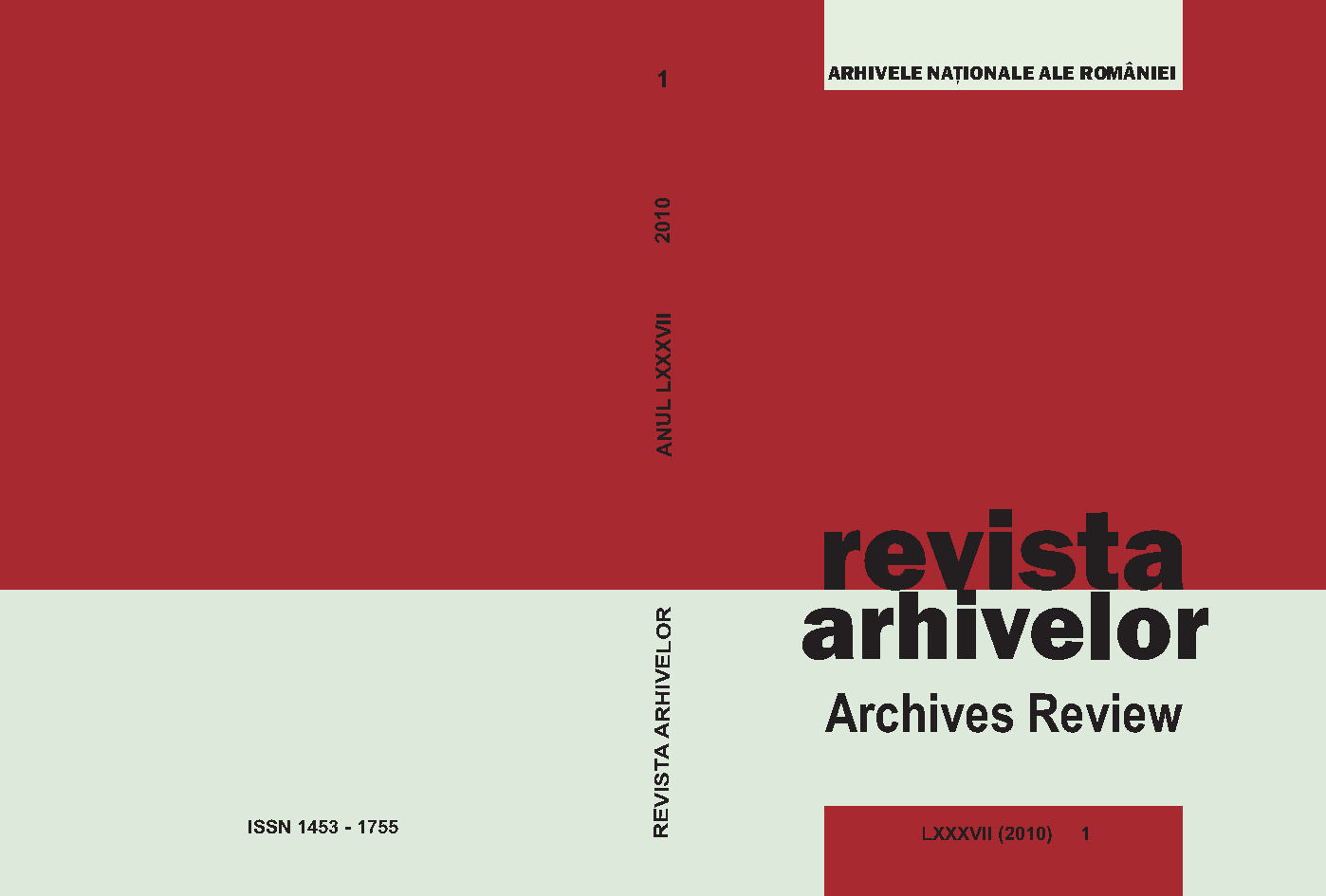Scurte consideraţii privind modernizarea Basarabiei în primul deceniu interbelic (1918-1928). Pe marginea unei recente apariţii editoriale la Chişinău
Modernization of Bessarabia in the First Inter-War Decade (1918-1928). Around a Recent Work Issued at Chişinău
Author(s): Octavian DascălSubject(s): History, Local History / Microhistory, Recent History (1900 till today), Interwar Period (1920 - 1939)
Published by: Arhivele Nationale ale Romaniei
Keywords: History of Bessarabia; Romanian inter-war history; modernity
Summary/Abstract: Written by Svetlanei Suveică, reader at State University of Moldova, the work Basarabia în primul deceniu interbelic (1918-1928). Modernizarea prin reforme [Bessarabia in the First Inter-War Decade 1918-1928. Modernization through Reforms] deals with the reforms in the electoral, agrarian and administrative fields in the decade following the joining of the territory between Dniester and Pruth rivers to Romania.First chapter represents a theorization of the meaning of the universal suffrage and explains the structure of the electoral reform. Thus, it reffers to the right of the universal, uniform, direct and secret suffrage and to the complex mechanism that implemented the Electoral Law. However, the investigation seems to be marked by the Romanian historiography’s stereotypies, characterized by uncomplete scientific treatment, still tributary to abstracting and even by neglecting the major guide marks of the history of Bessarabia previous to 1918. An important part is taken by the political parties in inter-war Bessarabia and the election campaigns. We consider that the six votings in Bessarabia between 1918 and 1928 do not reflect the Bessarabian inhabitants’ approval for the union act. Because of the coercitivness of the vote, they were rather a manner to accept the de facto situation, meaning the observance of the Romanian legislation and more or less active participation to the state political life.Not without basis, the anti-unionists contested the attribute of Sfatul Țării to declare for the political future of the Republic of Moldova, and henceforth for the legal value of the act on March 27, 1918. We consider that Sfatul Țării had no incontestable democratic feature, since it had not been elected by the vote of the whole population. This body had no international recognition, so that it could not pronounce unilaterally in the matter of the union with Romania. The Proceedings for Abolishment of the Romanian-Soviet conflict signed by A. Averescu and C. Rakovski require a serious debate among the historians. The Romanian governments denied the value of this agreement, but the reality still stands: the Romanian prime-minister did not agree to the retreat of the Romanian troops from Bessarabia in accordance with an international legal provisions, not even an unclear or debatable one, as the Romanian historiography has presented, this being thus an act that practically is equivalent to the indirect diplomatic recognition of the Soviet state by Romania.The second chapter of S. Suveică’s work deals with the implementation of the agrarian reform in Bessarabia. The author structures the realities and features of the agrarian reform in this province in an argued logical succession and examines the revolutionary feature of the agrarian legislation set up by Sfatul Țării and its radical characteristic. One should note the main conclusion: the great winner of the Bessarabian agrarian reform was the Romanian state.In the last chapter, S. Suveică approaches the context of the modernization of the administrative life in Bessarabia through the regulation and appliance of the principle of decentralization. The Romanian state did not promote an effective and consistent policy of decentralization between 1918 and 1925. By establishing the administrative decentralization through the Constitution in 1923, it actually applied centralizing methods. As a matter of fact, the foremost target of the Romanian politics in the joined territories was not the decentralization, but the administrative unification of them, fulfilled through the simple extension of the laws and territorial-administrative establishments from the Romanian Kingdom. We consider that, as a superior form of administration, the decentralization was in fully existence in Bessarabia only in the years when the province enjoyed the state of autonomy. Unfortunately, Suveică’s work goes rapidly and evasively over this important period and summarizes the idea of Bessarabia’s autonomy to a “speculative one for the forces that opposed the Union’s consolidation”.Svetlana Suveică‘s arduous approach turns to good account information less known or even ignored by the common public and the researchers. However, they need several corrections and completions. Some respects, like the Bessarabian population’s atitude regarding the union of Bessarabia with Romania or the state of mind and the relationship with the Romanian administration should be studied thoroughly along with the Romanian historians from the both banks of Pruth river and esentially be promptly assumed as objectively as possible by the entire Romanian society.
Journal: Revista Arhivelor
- Issue Year: LXXXVII/2010
- Issue No: 1
- Page Range: 183-205
- Page Count: 23
- Language: Romanian

